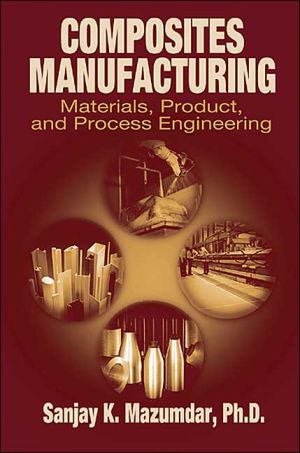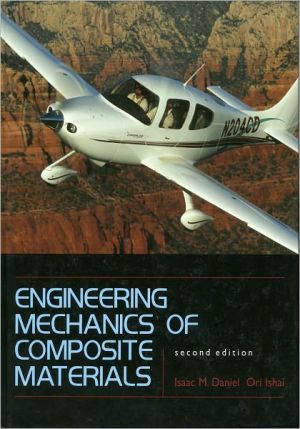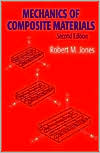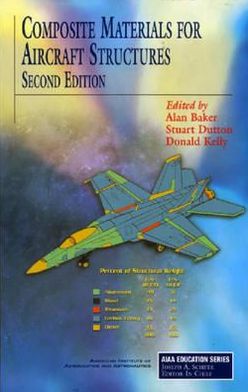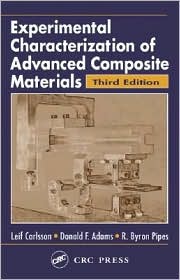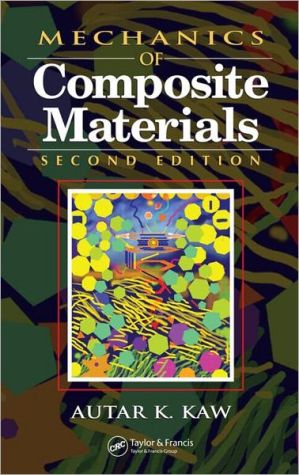Composites Manufacturing: Materials, Product and Process Engineering
More and more companies manufacture reinforced composite products. To meet the market need, researchers and industries are developing manufacturing methods without a reference that thoroughly covers the manufacturing guidelines. Composites Manufacturing: Materials, Product, and Process Engineering fills this void. The author presents a fundamental classification of processes, helping you understand where a process fits within the overall scheme and which process is best suited for a...
Search in google:
More and more companies manufacture reinforced composite products. To meet the market need, researchers and industries are developing manufacturing methods without a reference that thoroughly covers the manufacturing guidelines. Composites Manufacturing: Materials, Product, and Process Engineering fills this void. The author presents a fundamental classification of processes, helping you understand where a process fits within the overall scheme and which process is best suited for a particular component. You will understand:Types of raw materials available for the fabrication of composite productsMethods of selecting right material for an applicationSix important phases of a product development processDesign for manufacturing (DFM) approach for integrating benefits and capabilities of the manufacturing process into design of the product so that the best product can be produced in a shortest possible time and with limited resourcesDetailed description of composites manufacturing processes with some case studies on actual part making such as boat hulls, bathtubs, fishing rods and moreProcess models and process selection criteriaDesign and manufacturing guidelines for making cost-competitive composite productsProcedures for writing manufacturing instructions and bill of materials Joining and machining techniques for composite materialsCost-estimating techniques and methods of comparing technologies/manufacturing processes based on cost Recycling approach to deal with post-market composite products To stay ahead in this quickly changing field, you need information you can trust. You need Composites Manufacturing: Materials, Product, and Process Engineering. Booknews Mazumdar draws on his experiences as an author, lecturer, educator, and head of a service-oriented company providing various products to the composite materials industry, in writing this textbook on composites manufacturing. The book takes the reader step-by-step from raw material selection to final part fabrication and recycling. Specific chapter topics include raw materials for part fabrication, material selection guidelines, product development, design for manufacturing, manufacturing techniques, process models, production planning and manufacturing instructions, joining of composite materials, machining and cutting of composites, cost estimation, and recycling of composites. The text is suitable for students, engineers, and researchers working in the composite materials field. Annotation c. Book News, Inc., Portland, OR (booknews.com)
1Introduction11.1Conventional Engineering Materials11.1.1Metals21.1.2Plastics31.1.3Ceramics31.1.4Composites31.2What Are Composites?41.3Functions of Fibers and Matrix51.4Special Features of Composites61.5Drawbacks of Composites91.6Composites Processing101.7Composites Product Fabrication111.8Composites Markets131.8.1The Aerospace Industry141.8.2The Automotive Industry171.8.3The Sporting Goods Industry181.8.4Marine Applications181.8.5Consumer Goods191.8.6Construction and Civil Structures191.8.7Industrial Applications191.9Barriers in Composite Markets20References20Questions202Raw Materials for Part Fabrication232.1Introduction232.2Reinforcements232.2.1Glass Fiber Manufacturing272.2.2Carbon Fiber Manufacturing272.2.3Aramid Fiber Manufacturing282.3Matrix Materials282.3.1Thermoset Resins292.3.2Thermoplastic Resins332.4Fabrics362.4.1Woven Fabrics362.4.2Noncrimp Fabrics372.5Prepregs402.5.1Thermoset Prepregs432.5.2Thermoplastic Prepregs432.6Preforms442.7Molding Compound472.7.1Sheet Molding Compound482.7.2Thick Molding Compound (TMC)492.7.3Bulk Molding Compound (BMC)512.7.4Injection Moldable Compounds522.8Honeycomb and Other Core Materials52References55Questions553Material Selection Guidelines573.1Introduction573.2The Need for Material Selection573.3Reasons for Material Selection583.4Material Property Information593.5Steps in the Material Selection Process603.5.1Understanding and Determining the Requirements603.5.2Selection of Possible Materials603.5.3Determination of Candidate Materials613.5.4Testing and Evaluation623.6Material Selection Methods633.6.1Cost vs. Property Analysis633.6.2Weighted Property Comparison Method663.6.3Expert System for Material Selection68Bibliography69Questions694Product Development714.1Introduction714.2What Is the Product Development Process724.3Reasons for Product Development724.4Importance of Product Development734.5Concurrent Engineering744.6Product Life Cycle764.7Phases of Product Development774.7.1Concept Feasibility Phase774.7.2Detailed Design Phase784.7.3Prototype Development and Testing Phase784.7.4Preproduction Demonstration, or Pilot-Scale Production794.7.5Full-Scale Production and Distribution804.7.6Continuous Improvement804.8Design Review804.9Failure Modes and Effects Analysis (FMEA)81Reference83Bibiliography83Questions835Design for Manufacturing855.1Introduction855.2Design Problems865.3What Is DFM?875.4DFM Implementation Guidelines885.4.1Minimize Part Counts885.4.2Eliminate Threaded Fasteners895.4.3Minimize Variations895.4.4Easy Serviceability and Maintainability905.4.5Minimize Assembly Directions905.4.6Provide Easy Insertion and Alignment905.4.7Consider Ease for Handling905.4.8Design for Multifunctionality915.4.9Design for Ease of Fabrication915.4.10Prefer Modular Design915.5Success Stories925.5.1Composite Pickup Box925.5.2Laser Printer925.5.3Black & Decker Products935.6When to Apply DFM935.7Design Evaluation Method935.8Design for Assembly (DFA)945.8.1Benefits of DFA955.8.2Assembly-Related Defects955.8.3Guidelines for Minimizing Assembly Defects97References98Questions986Manufacturing Techniques996.1Introduction996.2Manufacturing Process Selection Criteria1006.2.1Production Rate/Speed1006.2.2Cost1016.2.3Performance1016.2.4Size1016.2.5Shape1016.3Product Fabrication Needs1036.4Mold and Tool Making1046.4.1Mold Design Criteria1046.4.2Methods of Making Tools1056.4.3Tooling Guidelines for Closed Molding Operations1086.5Basic Steps in a Composites Manufacturing Process1156.5.1Impregnation1166.5.2Lay-up1166.5.3Consolidation1166.5.4Solidification1176.6Advantages and Disadvantages of Thermoset and Thermoplastic Composites Processing1176.6.1Advantages of Thermoset Composites Processing1176.6.2Disadvantages of Thermoset Composites Processing1186.6.3Advantages of Thermoplastic Composites Processing1186.6.4Disadvantages of Thermoplastic Composites Processing1186.7Composites Manufacturing Processes1186.8Manufacturing Processes for Thermoset Composites1196.8.1Prepreg Lay-Up Process1196.8.2Wet Lay-Up Process1286.8.3Spray-Up Process1356.8.4Filament Winding Process1406.8.5Pultrusion Process1506.8.6Resin Transfer Molding Process1596.8.7Structural Reaction Injection Molding (SRIM) Process1756.8.8Compression Molding Process1796.8.9Roll Wrapping Process1886.8.10Injection Molding of Thermoset Composites1976.9Manufacturing Processes for Thermoplastic Composites2006.9.1Thermoplastic Tape Winding2016.9.2Thermoplastic Pultrusion Process2086.9.3Compression Molding of GMT2106.9.4Hot Press Technique2156.9.5Autoclave Processing2186.9.6Diaphragm Forming Process2226.9.7Injection Molding226References230Bibliography233Questions2337Process Models2357.1Introduction2357.2The Importance of Models in Composites Manufacturing2357.3Composites Processing2367.4Process Models for Selected Thermosets and Thermoplastics Processing2377.4.1Thermochemical Sub-Model2397.4.2Flow Sub-Model2527.4.3Void Sub-Model2807.4.4Stress Sub-Model2837.5Process Model for RTM284References285Questions2878Production Planning and Manufacturing Instructions2898.1Introduction2898.2Objectives of Production Planning2908.3Bill of Materials2908.4Manufacturing Instructions2948.4.1Manufacturing Instructions for Making Tooling Panels2968.4.2Manufacturing Instructions for Making Flaps2968.5Capacity Planning3048.5.1Problem Definition3058.5.2Assumptions3068.5.3Capacity Analysis306Questions3089Joining of Composite Materials3099.1Introduction3099.2Adhesive Bonding3109.2.1Failure Modes in Adhesive Bonding3139.2.2Basic Science of Adhesive Bonding3139.2.3Types of Adhesives3159.2.4Advantages of Adhesive Bonding over Mechanical Joints3189.2.5Disadvantages of Adhesive Bonding3199.2.6Adhesive Selection Guidelines3199.2.7Surface Preparation Guidelines3209.2.8Design Guidelines for Adhesive Bonding3229.2.9Theoretical Stress Analysis for Bonded Joints3239.3Mechanical Joints3239.3.1Advantages of Mechanical Joints3259.3.2Disadvantages of Mechanical Joints3259.3.3Failure Modes in a Bolted Joint3259.3.4Design Parameters for Bolted Joints3269.3.5Preparation for the Bolted Joint327References328Questions32910Machining and Cutting of Composites33110.1Introduction33110.2Objectives/Purposes of Machining33110.3Challenges during Machining of Composites33210.4Failure Mode during Machining of Composites33310.5Cutting Tools33410.6Types of Machining Operations33610.6.1Cutting Operation33610.6.2Drilling Operation341References343Questions34411Cost Estimation34511.1Introduction34511.2The Need for Cost Estimating34611.3Cost Estimating Requirements34811.4Types of Cost34811.4.1Nonrecurring (Fixed) Costs34811.4.2Recurring (Variable) Costs34911.5Cost Estimating Techniques35011.5.1Industrial Engineering Approach (Methods Engineering)35111.5.2ACCEM Cost Model35111.5.3First-Order Model35211.5.4Cost Estimating by Analogy36111.6Cost Analysis for Composite Manufacturing Processes36111.6.1Hand Lay-up Technique for Aerospace Parts36211.6.2Filament Winding for Consumer Goods36611.6.3Compression Molded SMC Parts for Automotive Applications36611.7Learning Curve37011.8Guidelines for Minimization of Production Cost372References373Bibliography374Questions37412Recycling of Composites37512.1Introduction37512.2Categories of Dealing with Wastes37712.2.1Landfilling or Burying37712.2.2Incineration or Burning37712.2.3Recycling37712.3Recycling Methods37812.3.1Regrinding37912.3.2Pyrolysis37912.4Existing Infrastructure for Recycling37912.4.1Automotive Recycling Infrastructure38012.4.2Aerospace Recycling Infrastructure381References382Questions383Index385
\ From The CriticsMazumdar draws on his experiences as an author, lecturer, educator, and head of a service-oriented company providing various products to the composite materials industry, in writing this textbook on composites manufacturing. The book takes the reader step-by-step from raw material selection to final part fabrication and recycling. Specific chapter topics include raw materials for part fabrication, material selection guidelines, product development, design for manufacturing, manufacturing techniques, process models, production planning and manufacturing instructions, joining of composite materials, machining and cutting of composites, cost estimation, and recycling of composites. The text is suitable for students, engineers, and researchers working in the composite materials field. Annotation c. Book News, Inc., Portland, OR (booknews.com)\ \
